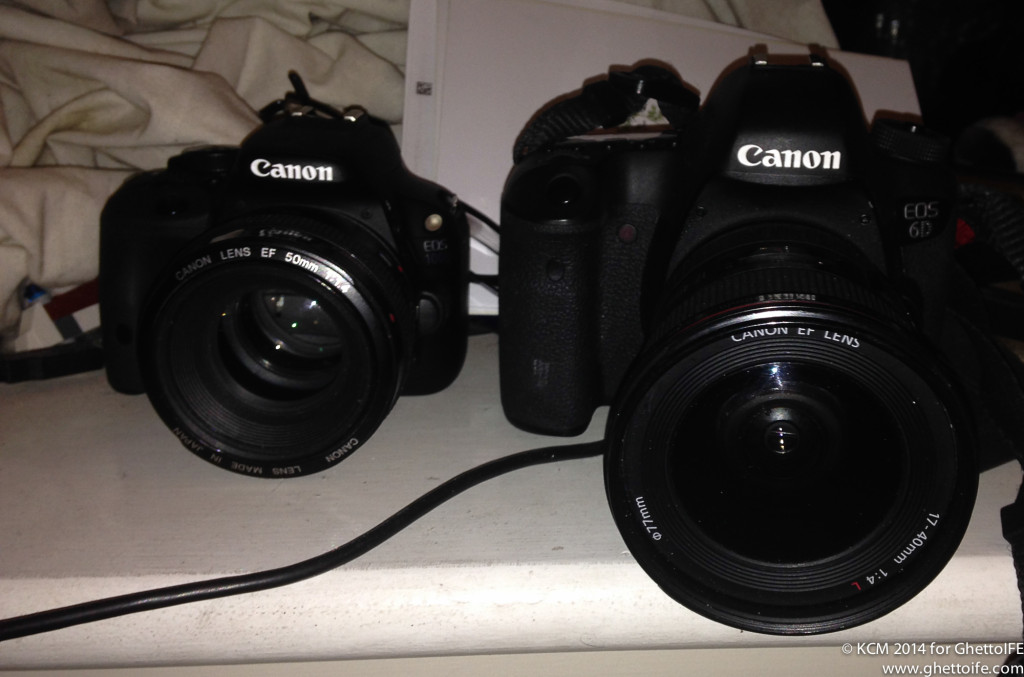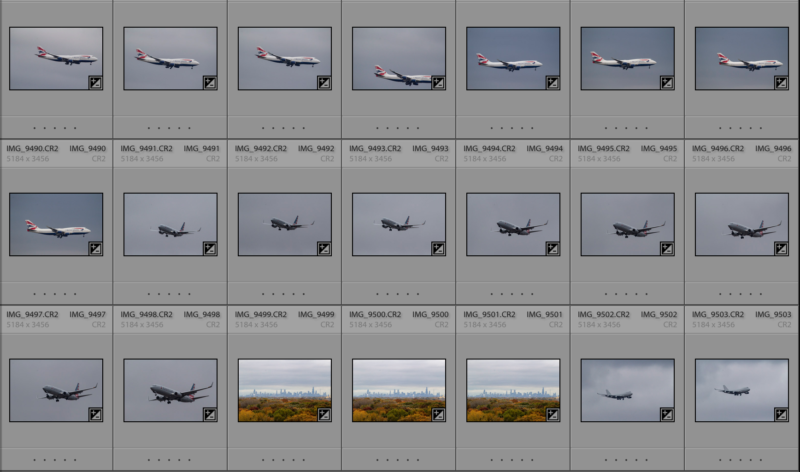Long Way Home – The Canon 100D – a shooter for aviation photography?
In this adventure:
- I’ve got to stop looking at odd routings and thinking they’re good ideas
- Sleep? What’s that concept? Off to Heathrow T3
- Lounging around Heathrow T3
- AA99 London Heathrow to Chicago O’Hare
- The Hyatt Regency O’Hare
- The Nutella Cafe
- Fooding Around Chicago
- The Canon 100D – Good for aviation photography?
- Camera shift – from EOS 6D to EOS R
- Back to O’Hare, Air France Lounge
- AY10 Chicago to Helsinki Vantaa… with Air Italy?
- Two hours and 20 in Helsinki Vantaa
- AY1335 Helsinki Vantaa to London Heathrow
- Bussing back home
- Long Way Home or short way back?
Let’s talk cameras
For those who know I keep a couple of cameras (or three cameras) in my kit when I travel. These are:
- The Canon 6D – The classic workhorse. Five years old, and still works a charge. If a little battle-worn now.
- The Canon 100D – I got this for a wedding some years ago. Since then it’s become my go-to camera when I need a little discretion when shooting
- The Canon EOS R – I’ll reveal more about this later 😉
But for those who are getting into photography, some of these options are pretty expensive. So, can you get decent aviation photos with a small crop body?
Back to the Cannon 100D
Let’s review what the 100D looks like:
The Canon 100D/SL1/Kiss X7 (take your pick depending on your territory) , offers 18mpx sensor in an APS-C format – with a standard EOS Mount.
More importantly, it offers a 4 Frames per second shooting, with a 8 shot buffer if you’re shooting Camera RAW (and I strongly advise you do).
So, there’s options if you’re going to do some aviation photography. It isn’t going to win awards in performance, but if you are starting out – could it do the job?
In my test lab of the Hyatt Regency O’Hare, I could had mounted the camera with a 70-200 f4L Series Lens (giving an equivalent of 112mm to 320mm).
But this is me. I decided to test this on the Canon 100-400 f4.5-f5.6L Series Mark I a lot cheaper than you used to – which on this camera will give you an equivalent of 160mm to 640mm lens.
And it does look rather comedic on a Canon 100D.
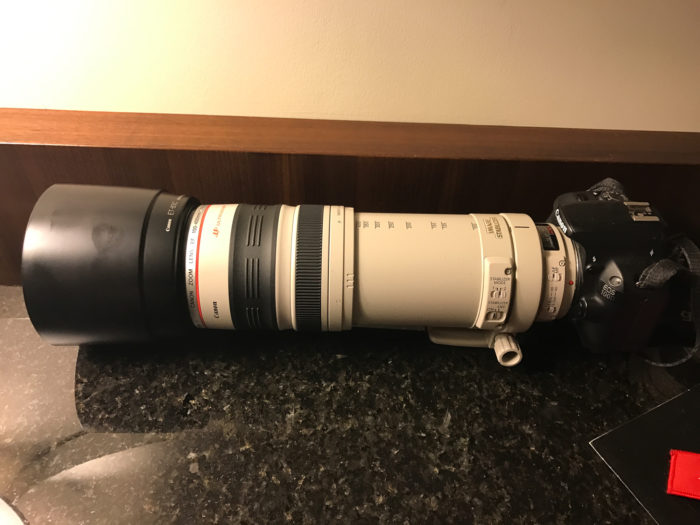
Go on. Giggle Away. You won’t be the first person to do so. Or the last.
There is one nasty thing (and it’s a Canon thing), with a limited autofocus point map, with 9 autofocus points. These are distributed in a diamond pattern, which can make for a challenge when you’re aiming for something far away.
So the real reason why I didn’t slap on the 6D – and used the 100D instead? I was tired out from catching up with friends. I took the first camera and first lens to hand…

Iberia Airbus A340-600 – ISO200, 400mm 1/400 at f7.1.
There’s a bit of grain on the sensor (which is to be expected with a crop), but the results are pretty clean

Cargolux Boeing 747-400F – ISO200, 400mm 1/500 at f7.1.
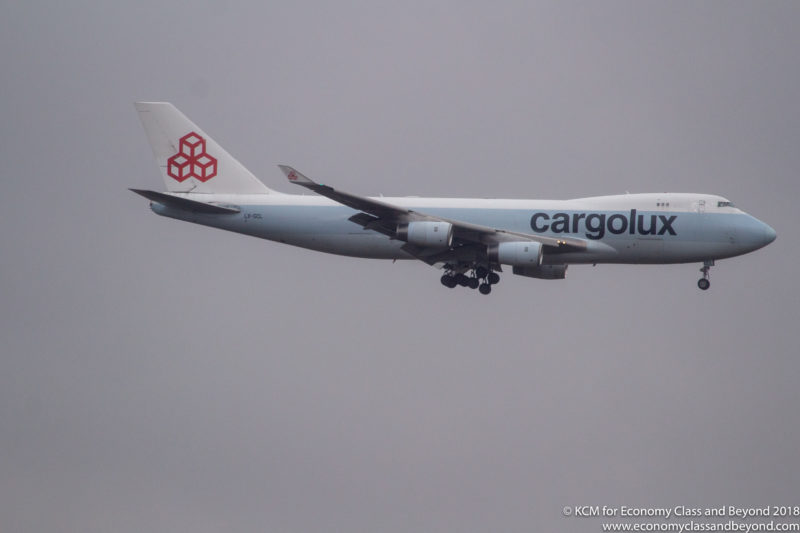
Cargolux Boeing 747-400F – ISO200, 400mm 1/400 at f7.1.
Much clearer – with varying conditions, the camera adapts pretty reasonably.
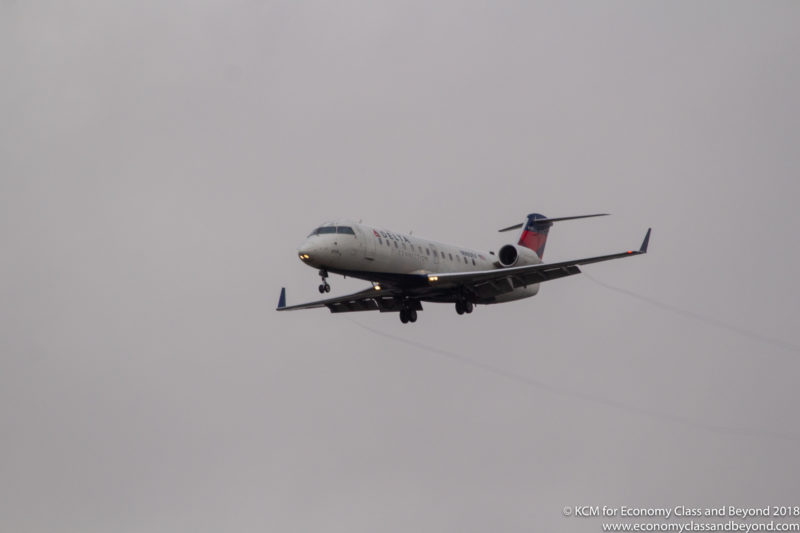
Delta Connection Bombardier CRJ-200ER. ISO200 390mm 1/400, f7.1
Here, the lines of resolution can be seen as well as the water vapour trail… and doesn’t disguise the dirtiness of this plane

Spirit Airlines Airbus A320 – ISO200, 400mm 1/500 at f7.1.
The yellow does indeed pop out even with a little light processing in Adobe LightRoom
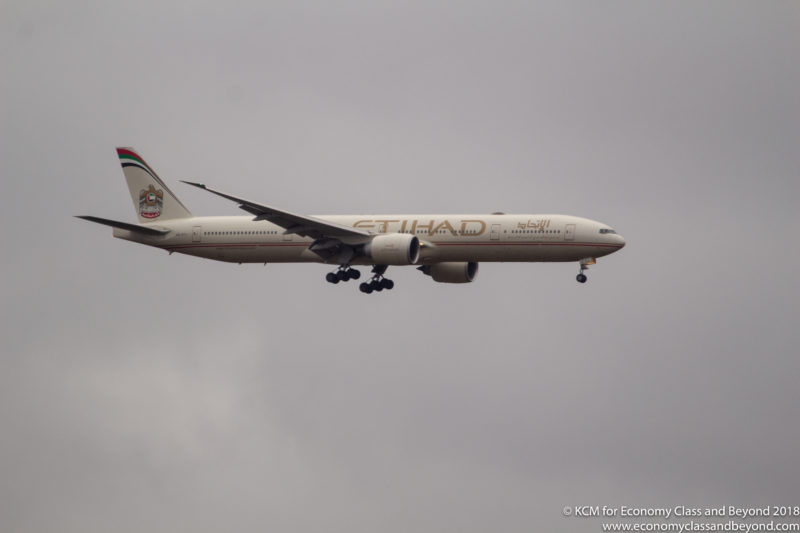
Etihad Boeing 777-300ER – ISO200, 400mm 1/500 at f6.3.
Whilst a livery like this can blend into the background, a little post processing to pull the colours out, as well as modify the cloud does help
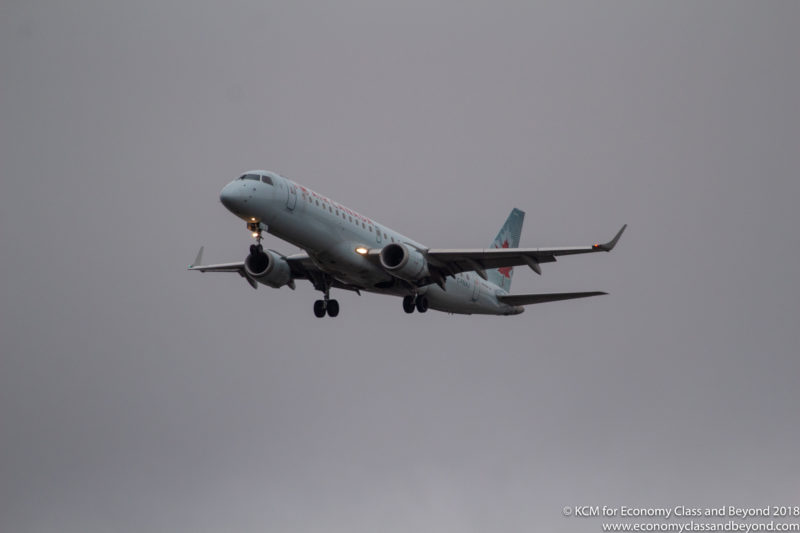
Air Canada Embraer E-190 – ISO200, 1/250 f5.6 at 400mm
Whilst the light is fading in some points, the camera is fast enough to keep up and capture detail
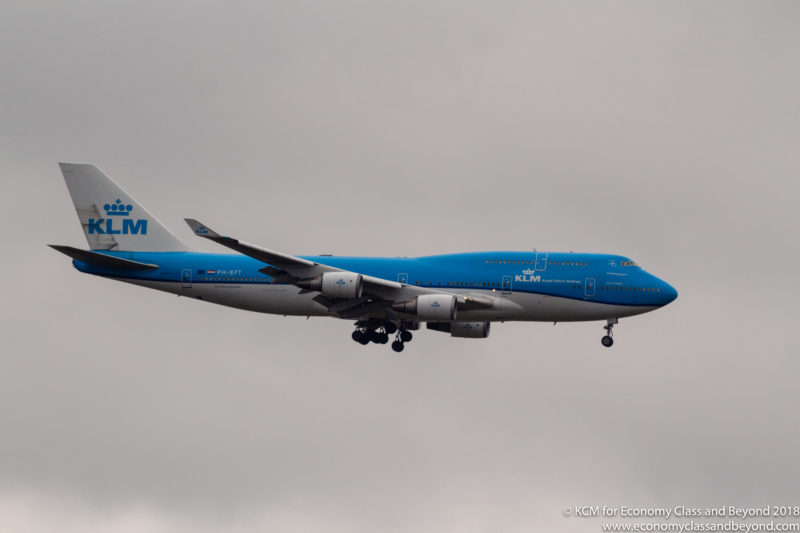
KLM Boeing 747-400 Combi – ISO200 1/320, f6.3 at 400mm
It’s amazing what a little extra light can do, and what you can do with it. Remember, all a camera is a light-tight box. As such, camera’s suck light up for breakfast. If you give the camera the ability to get more light – it benefit from it.
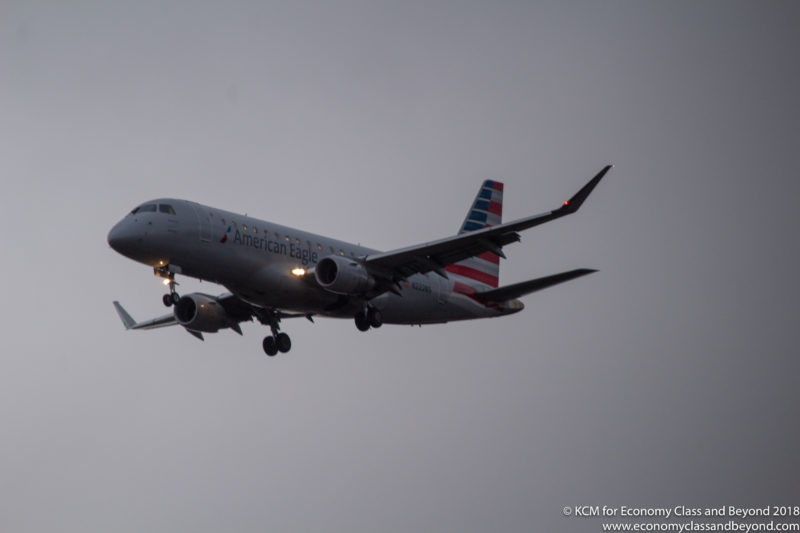
American Eagle Embraer E-175 – ISO200, f5.6 at 1/160
Although, don’t feed the camera enough light, and you can get some nice dramatic shadows.
Now, you’d think a 100-400L lens is incapable of doing landscape style photography. Again… depends. I use it in different ways… and got these results.
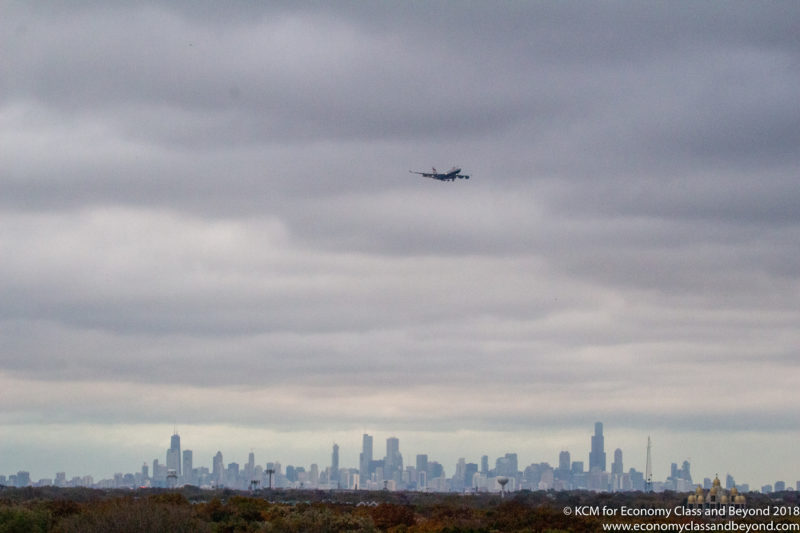
British Airways Boeing 747-400 with the City of Chicago in the background. ISO1600, f10 at 1/800
I’ll also add that lighting was failing, so I cranked up the ISO speed. There is an applicable amount of grain or noise – and maybe a little post-cleanup is needed.
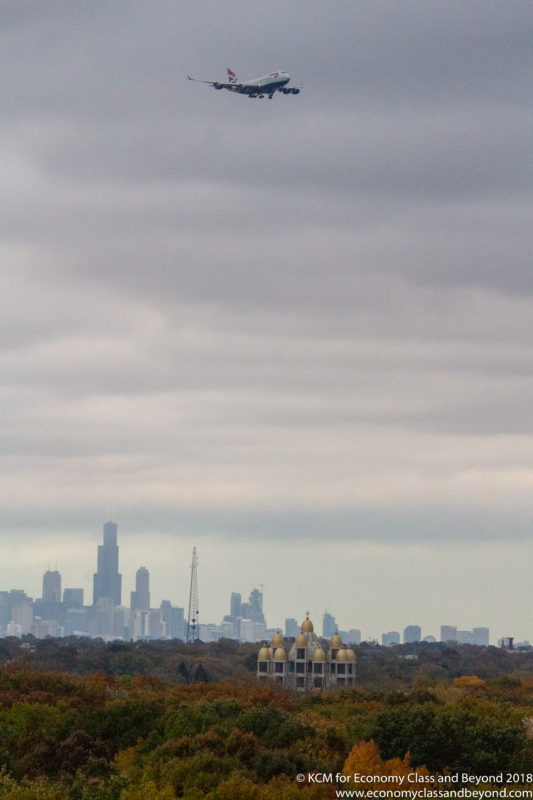
British Airways Boeing 747-400 with the City of Chicago in the background. ISO1600, f9 at 1/800
The portrait style shot works with some good impact here.
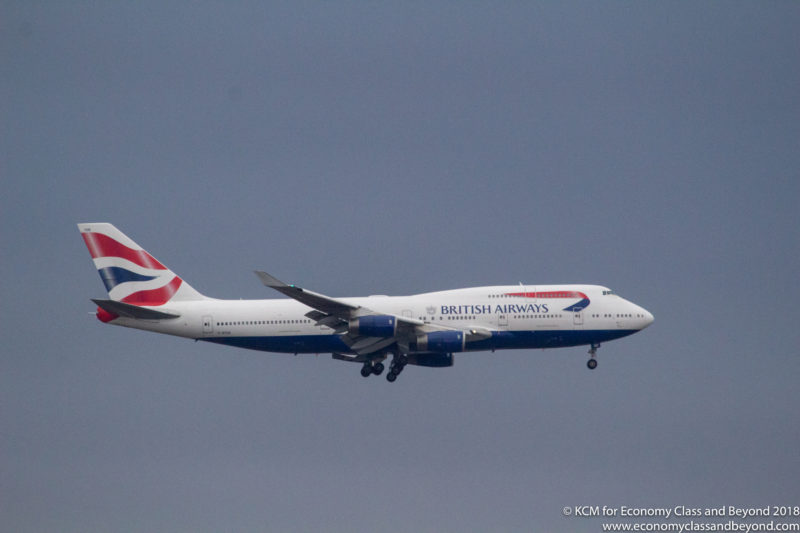
British Airways Boeing 747-400 – ISO1600 f8 at 1/500
Well – it’s only fair that we get a decent shot of the BA 747 as it was used in the previous photos
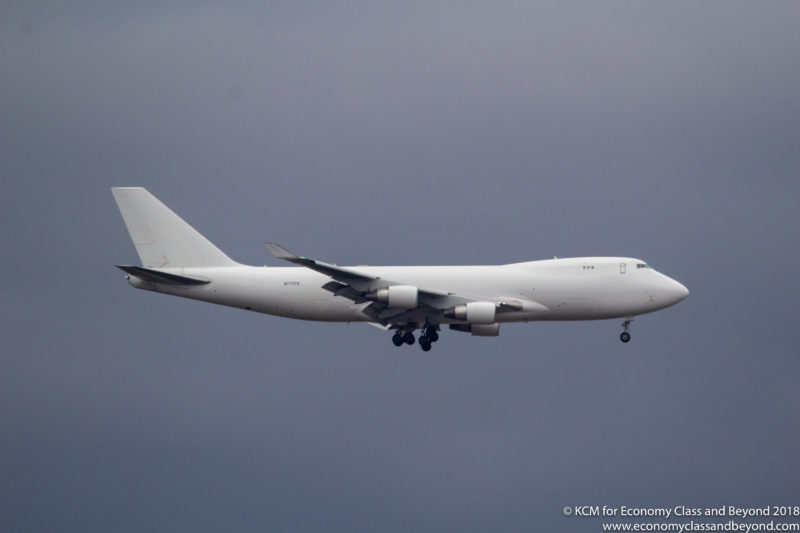
Atlas Air Boeing 747-400 – ISO1600 f7.1 at 1/400
So white. So wow. It challenges China Eastern for exciting liveries.
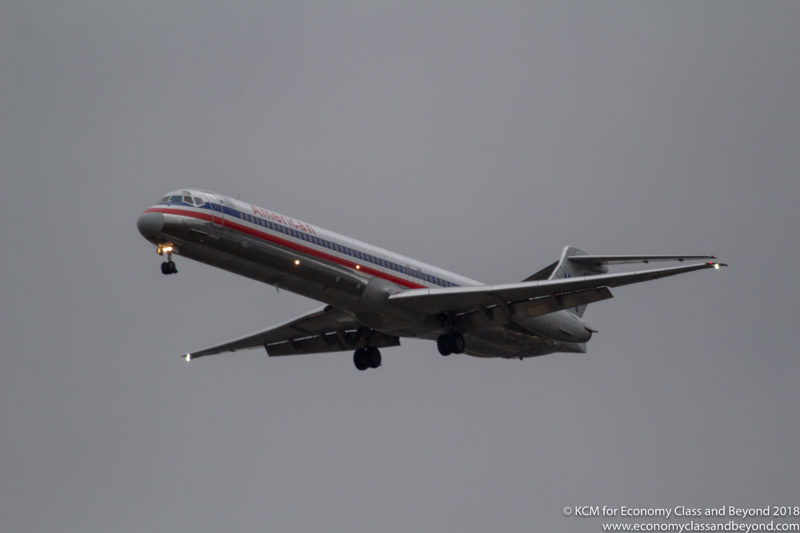
American Airlines McDonnell Douglas MD80 – ISO1600 1/320 f6.3
One of the few times I’ve seen this at O’Hare recently . Those planes are starting to get a little rare now. Although you can see the light is failing badly now. Add some rain in the distance, and you get this
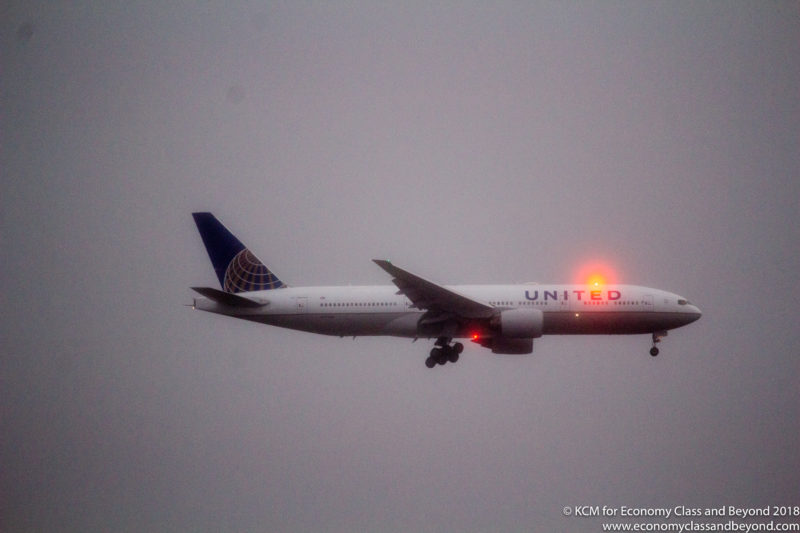
United Airline Boeing 777-200 – ISO 400, 1/250 at f6.3
Working near the limits of the lenses and the odd light (due to rain falling), I got this result. Not perfect (especially as I thought I had set ISO1600), but more than passable for a quick shot
The Canon 100D does cope with burst photography rather well – which for those who want multiple chances at a shot, will welcome. But that buffer does fill up fast.
Also, you can see my shots are more than off in some of the photos – the lens is unbalanced with such a small camera, so you need to account for this when using it. Or develop good muscles for holding it.
The Canon 100D today
The Canon 100D has been superseded by the Canon 200D – which has an updated sensor, a flippy out screen, Dual-Pixel Autofocus, and lots of Canon goodness – and can be had for £554.99 with a kit lens. You can pick up a Canon 100D on eBay for £180 to £300 (or more) depending on condition.
The lens I used – the 100-400L can be had from £350 to £600 depending on condition and as I’ve noted in the past – is a fine heavy lump of glass.
Would I get one today?
The Canon 100D is a great little camera – and even second-hand – it has great value and potential. And as a second body for my purposes, I’d seriously consider a spare in the collection. However, I’d also be looking at a 200D in a body-only kit, with updated internals and a autofocusing system
But if you are wanting to get into aviation photography and are budget limited – don’t write off the cheaper Canon EOS series cameras. Depending on the one you get – you can get some rather satisfying images from them.
Please pair the camera with decent lenses though – your camera will thank you for it.
Next: From one end of the camera spectrum to the other: Introducing the EOS R.
Welcome to Economy Class and Beyond – Your no-nonsense guide to network news, honest reviews, with in-depth coverage, unique research as well as the humour and madness as I only know how to deliver.
Follow me on Twitter at @EconomyBeyond for the latest updates! You can also follow me on Instagram too!
Also remember that as well as being part of BoardingArea, we’re also part of BoardingArea.eu, delivering frequent flyer news, miles and points to the European reader

